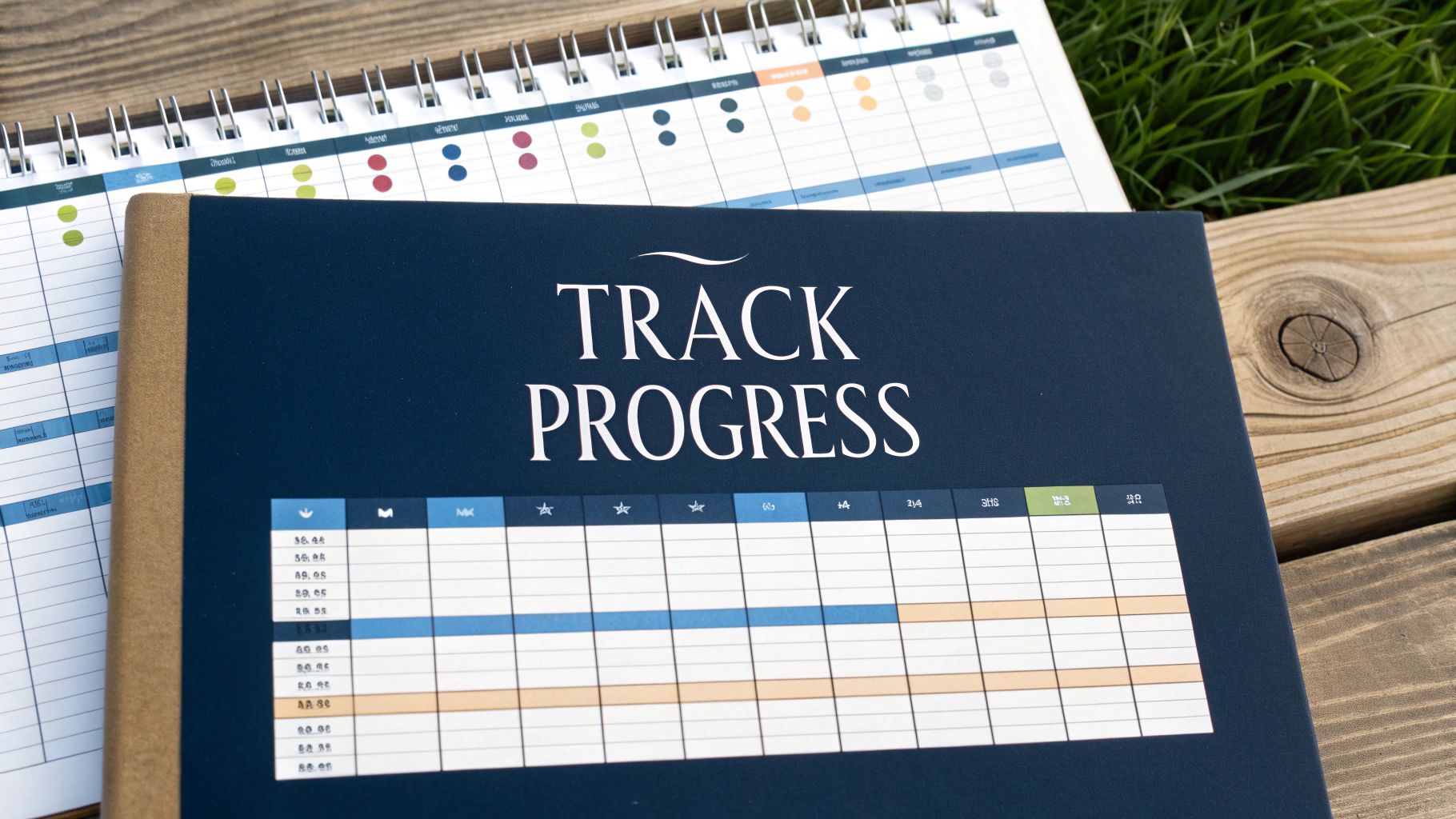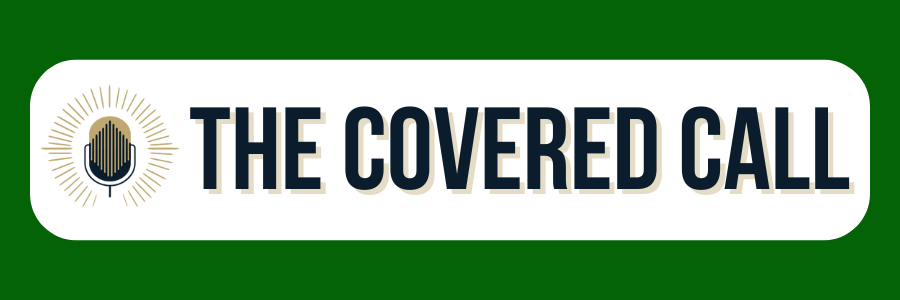Understanding Personal Development Plans: Your Foundation for Success

A personal development plan (PDP) is much more than just paperwork - it's a practical tool that helps map your path to professional and personal growth. Think of it as your personal GPS that identifies where you are now, where you want to go, and the best routes to get there. With the right approach, a PDP becomes your guide for making meaningful progress toward your goals.
The Psychology of Effective Development
Success in personal development starts with understanding how we grow and learn. The key is embracing what psychologists call a growth mindset - seeing challenges as opportunities rather than obstacles. When you face a setback, treat it as feedback that helps you adjust your approach rather than proof of failure. This shift in perspective makes a real difference in how you handle difficulties and learn from experience.
Structuring Your Personal Development Plan for Maximum Impact
The most effective PDPs share some essential elements that turn good intentions into real results. A clear structure helps you stay focused and measure your progress over time. Here are the key pieces to include:
- Clear, Measurable Goals: Write down specific goals that you can actually track - for example, "Complete three public speaking engagements by December" rather than just "Improve communication skills"
- Actionable Steps: Break big goals into smaller weekly or monthly tasks that feel doable
- Regular Check-ins: Set aside time each month to review your progress and adjust your plan based on what's working
But having a plan isn't enough on its own. Research published in the Journal of Workplace Learning studied 2,271 Dutch pharmacy assistants and found something interesting: While people with PDPs did more learning activities, just having a plan didn't automatically lead to better job skills or more future learning. You can read more about the study here. The takeaway? Your PDP needs to be a living document that you actively use and update, not just file away and forget.
Building Your Template: Essential Components That Drive Growth

A personal development plan is more than just another document to fill out. It's an active tool that guides your growth when structured thoughtfully. By understanding how successful professionals build their plans, from initial assessment through vision-setting, you can create a template that actually moves you forward.
The Power of Self-Assessment
Every strong personal development plan starts with honest self-reflection. Like surveying land before building a house, you need to understand your current foundation. Take time to evaluate your skills realistically - both your natural talents and areas where you struggle. This clear-eyed view of your capabilities helps you set goals that make sense for where you are now.
Goal Setting That Works
With a solid self-assessment complete, you can set goals that truly fit you. The proven SMART framework helps here: make goals Specific, Measurable, Attainable, Relevant and Time-bound. For example, instead of "I want to present better," try "I will give a 15-minute project update to my team by March 31st." This precise target lets you track real progress.
Actionable Steps and Accountability
Break down your SMART goals into bite-sized tasks with clear deadlines. Think of it like climbing a mountain - you tackle it one step at a time rather than trying to leap to the summit. Share your plan with someone who can keep you on track, whether that's a mentor, peer group, or coach. External accountability helps you follow through. For a solid example of this structured approach, check out Individual Development Plans, which guide employees through assessment, goal-setting, and creating detailed action steps.
Long-Term Vision and Adaptability
Your immediate goals should connect to your bigger picture - where do you want to be in 5-10 years? This longer view gives meaning to your daily efforts. But stay flexible. Your plan isn't carved in stone. Review it regularly and adjust based on your progress, changing circumstances, and new opportunities. This balance of direction and adaptability keeps your development on track while letting you grow naturally.
From Planning to Progress: Implementation Strategies That Work
A solid personal development plan is just the starting point - success comes from taking consistent action. Making real career progress means going beyond good intentions to create specific, measurable actions you can take each day.
Turning Plans Into Actionable Steps
Think of your development plan like building a house. Your template provides the architectural drawings, but you still need detailed construction plans. This means breaking big career goals into smaller tasks you can actually complete. For instance, instead of just saying "become a better leader," create specific actions like:
- Take a leadership workshop next month
- Shadow a senior manager for one week
- Read one leadership book each quarter
Breaking things down this way makes even ambitious goals feel doable and gives you a clear roadmap to follow.
Maintaining Momentum and Motivation
Since motivation naturally rises and falls, you need systems to keep moving forward. Set clear progress metrics for each goal - instead of vaguely planning to "network more," commit to "meet five new people in my industry every month." Tracking concrete numbers helps you see your progress and stay motivated.
You also need accountability to stay on track. Consider:
- Finding a mentor
- Joining a professional group
- Sharing goals with a friend who will check in regularly
Overcoming Implementation Challenges
One of the biggest obstacles is falling back into old habits. Just like learning a new language requires daily practice, developing new professional skills demands consistent effort and repetition. Life also throws curveballs that can derail your plans. Be ready to adjust your approach based on real-world feedback and new opportunities.
Research shows these challenges are common. A 2018 study found that while the National Institutes of Health requires Individual Development Plans (IDPs), only 54% of postdoctoral researchers completed them. Among those who did, just 38% found them helpful. Learn more about IDP effectiveness in career development.
The Importance of Adaptability
Your development plan should evolve as you grow. Review it regularly and update it based on:
- New insights about your strengths and weaknesses
- Changing career goals and opportunities
- Feedback from mentors and peers
- Lessons learned from success and setbacks
This flexibility helps ensure your plan remains relevant and effective at driving your professional growth over time.
Measuring Success: Progress Tracking That Motivates

Simply creating a personal development plan isn't enough - the key is actively monitoring your progress and using that information to stay on track. This means going beyond basic checkboxes to understand which metrics actually matter for your specific goals.
Choosing the Right Metrics for Your Goals
Your choice of metrics should match what you're trying to achieve. For straightforward goals like reading one book monthly, tracking is simple - you either completed it or you didn't. But improving soft skills like communication requires more thoughtful measurement. You might track:
- Number of presentations given
- Active participation in team meetings
- Specific feedback from colleagues
- Rating yourself on key communication behaviors
Digital Tools and Tracking Systems
The right tools can make progress tracking much easier. Simple spreadsheets work well for logging metrics and creating progress charts. Project management tools can help organize action items - Trello and Asana are popular options that adapt well for personal development tracking. Pick tools that match your style and won't overcomplicate things.
The Power of Regular Review and Feedback
Set aside specific times each week or month to review your progress. During these check-ins, celebrate wins, identify roadblocks, and adjust your approach as needed. Don't just rely on self-assessment - actively seek input from mentors and colleagues who can provide honest feedback. Learn more about making feedback work for you in this guide to personal development planning.
Staying Motivated Through Challenges
When motivation dips (and it will), having the right strategies helps you push through. Break big goals into smaller milestones you can celebrate along the way. Use visual progress trackers like charts or checklists to see how far you've come. Most importantly, stay connected to your deeper reasons for pursuing these goals. That core purpose will sustain you through tough spots better than any external motivation tricks.
Adapting Your Template: Strategies for Every Career Stage
Your personal development plan needs to evolve as your career progresses. The strategies and goals that work early in your career will be quite different from what you need as a senior professional. Let's look at how to adjust your plan for maximum impact at each career stage.
Early Career: Building a Foundation
When you're just starting out, focus on developing core skills and exploring potential career paths. This is your time to learn, experiment, and grow.
- Master essential skills: Research and develop the fundamental abilities needed in your field
- Find a mentor: Build relationships with experienced professionals who can guide your growth
- Take training opportunities: Participate in workshops, courses, and programs to expand your knowledge
- Grow your network: Connect with others in your industry at events and online
The skills and relationships you build now create the foundation for future advancement.
Mid-Career: Specialization and Growth
Once you've gained experience, shift your focus toward becoming an expert in your chosen areas. This is when you can take on bigger challenges and leadership roles.
- Choose your focus: Identify the specific skills and knowledge areas where you want to excel
- Build leadership abilities: Take on project management and team lead roles
- Seek stretch assignments: Volunteer for projects that push your current capabilities
- Create industry presence: Share your expertise through speaking, writing, or teaching others
Late Career: Legacy and Mentorship
In your later career stages, concentrate on making a lasting impact through sharing knowledge and helping others grow. Your experience is incredibly valuable to the next generation.
- Guide others: Take on formal or informal mentoring roles
- Try new directions: Consider consulting, advisory roles, or career shifts that use your expertise
- Support your field: Get involved with professional associations or nonprofit work
- Document successes: Share your key learnings and achievements with others
Adapting to Change and Industry Context
Your development plan should be flexible and responsive to change. Review it regularly and adjust based on:
- New industry developments
- Feedback from peers and mentors
- Emerging opportunities
- Changes in your interests and goals
For instance, if your industry starts adopting new technologies, you might need to add technical training to your plan. The key is staying responsive while maintaining focus on your core development goals.
Remember that personal development planning is an ongoing process. Your plan should grow and change with you, helping you navigate each stage of your career journey while staying true to your professional aspirations.
Avoiding Common Pitfalls: Lessons from the Field

Having a solid personal development plan is essential, but putting it into practice is where many people struggle. By understanding the common obstacles that derail progress, you can take steps to avoid them and stay focused on your goals.
The Pitfall of Unrealistic Goals
Setting goals that are too ambitious is like trying to climb Mount Everest without proper training - you're setting yourself up for frustration and failure. While it's good to aim high, break down your larger goals into smaller, achievable milestones. Small wins build confidence and give you the momentum to tackle bigger challenges.
Managing Energy and Motivation
Your enthusiasm will naturally rise and fall throughout your journey. Think of your development plan as a compass that keeps you oriented when motivation dips. Here are proven ways to maintain your drive:
- Weekly Check-ins: Set aside 15 minutes to review progress and adjust course
- Support System: Find a mentor or friend who can offer encouragement and feedback
- Progress Tracking: Keep a simple log of your achievements to see how far you've come
Embracing Flexibility
Life rarely follows a straight path. New opportunities emerge, priorities shift, and unexpected challenges arise. A good development plan evolves with you - like a map that gets updated as you discover new territory. Take time to assess:
- Are your goals still meaningful and relevant?
- Do your timelines need adjustment based on current circumstances?
- What new skills or interests could enhance your growth?
Growing with New Opportunities
Your career path will likely take unexpected turns. Review your plan regularly to ensure it reflects your current aspirations rather than outdated goals. For example, mastering a new technical skill might reveal leadership opportunities you hadn't considered. Stay open to possibilities while keeping your core development priorities in focus.
Ready to chart your own path to success? The Covered Call Podcast features conversations with accomplished guests like Luke Gromen, Rick Rule, and Doug Casey who share practical insights on achieving personal and financial independence. Listen to The Covered Call Podcast to fuel your journey forward.

